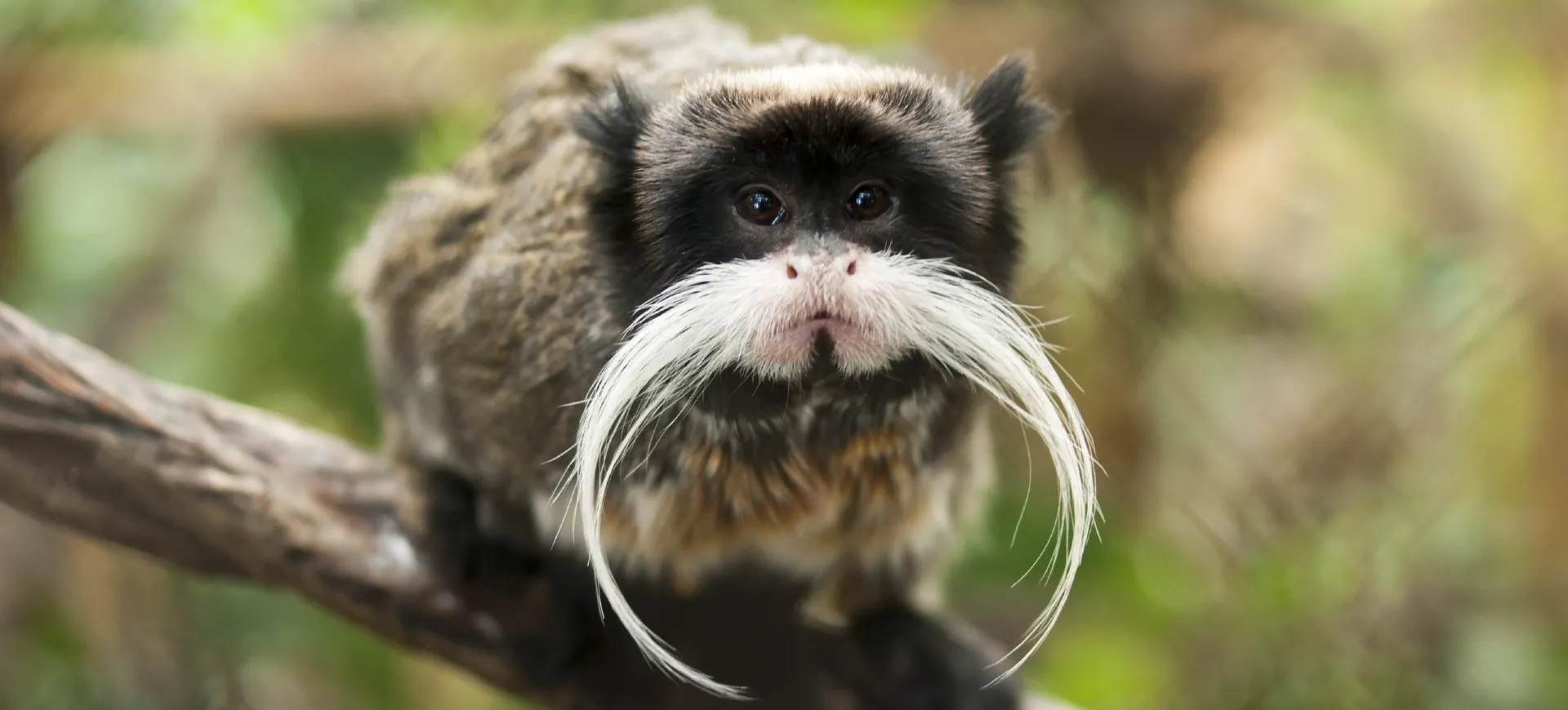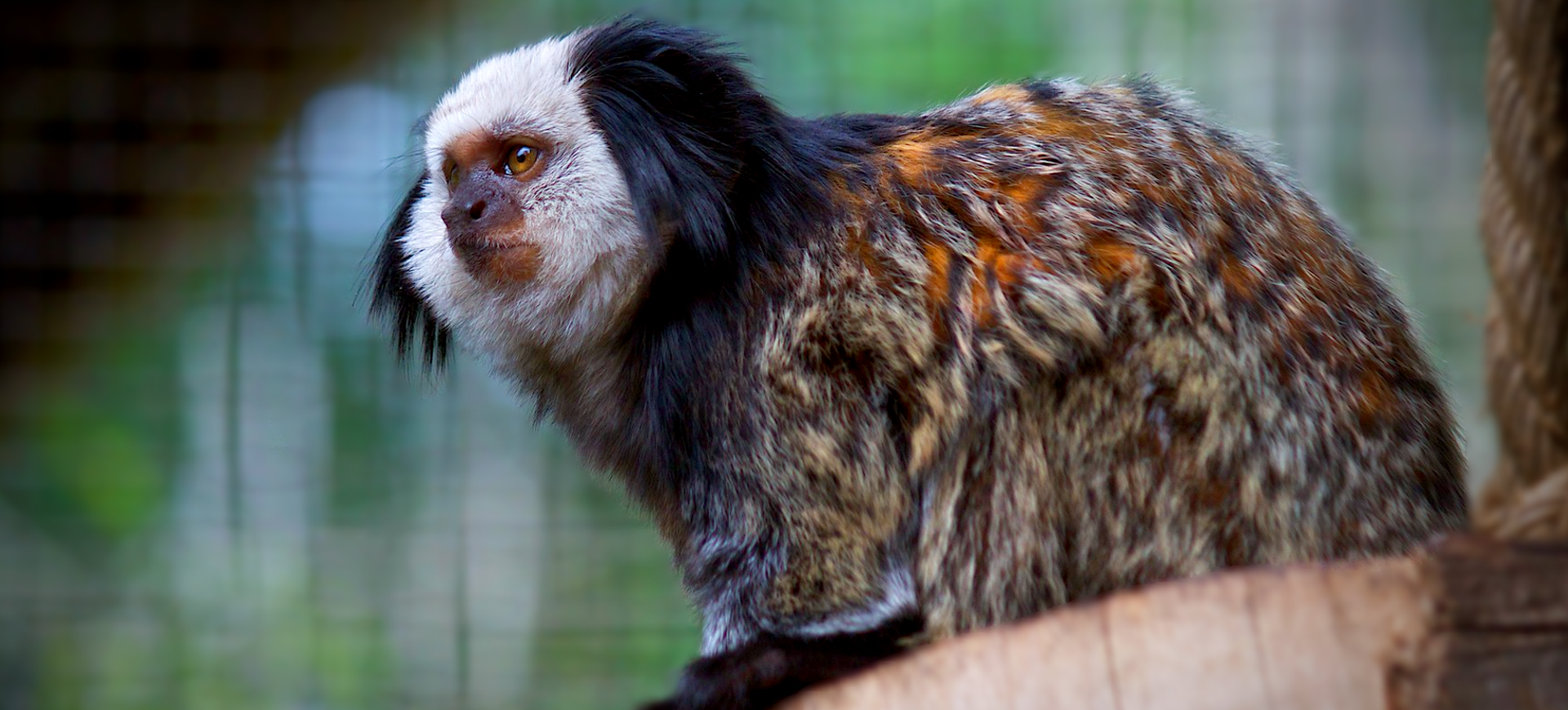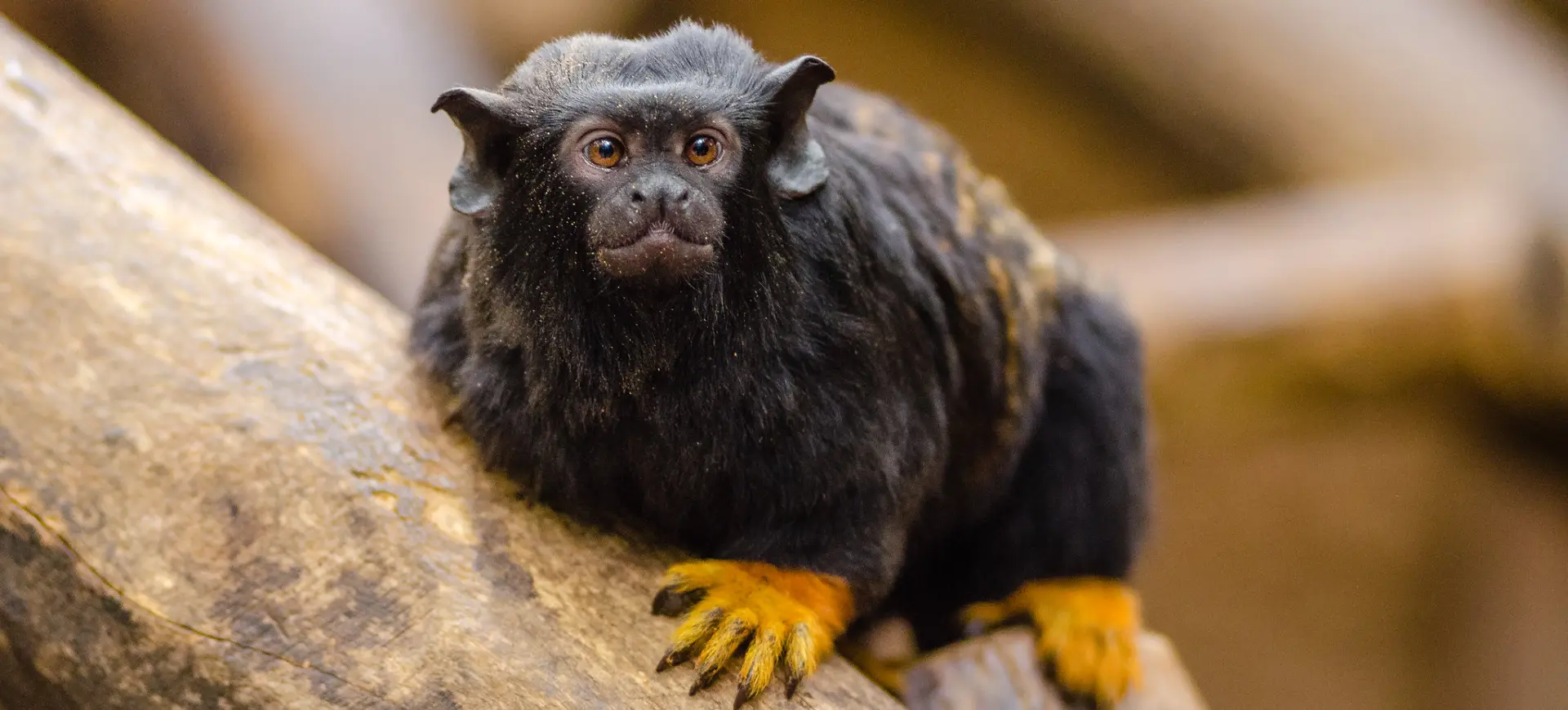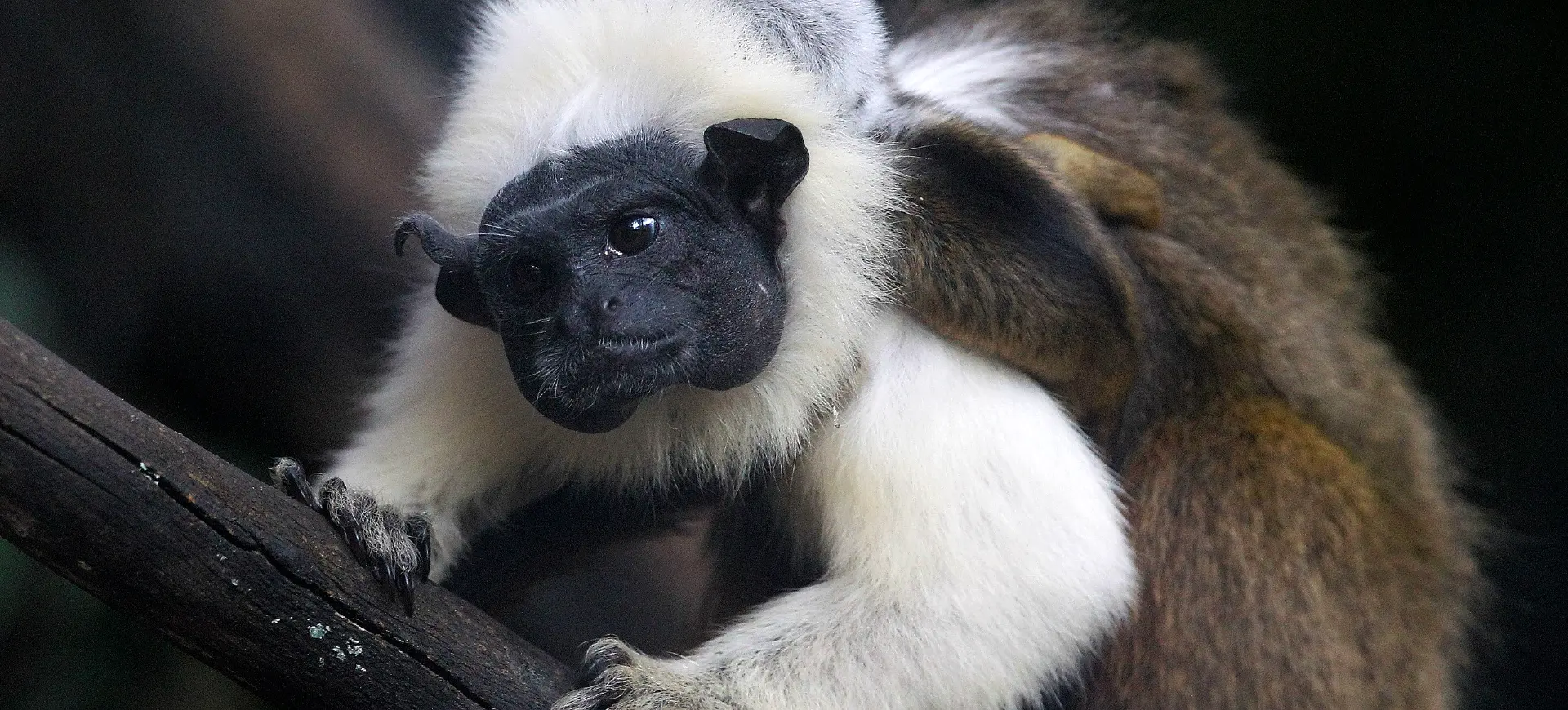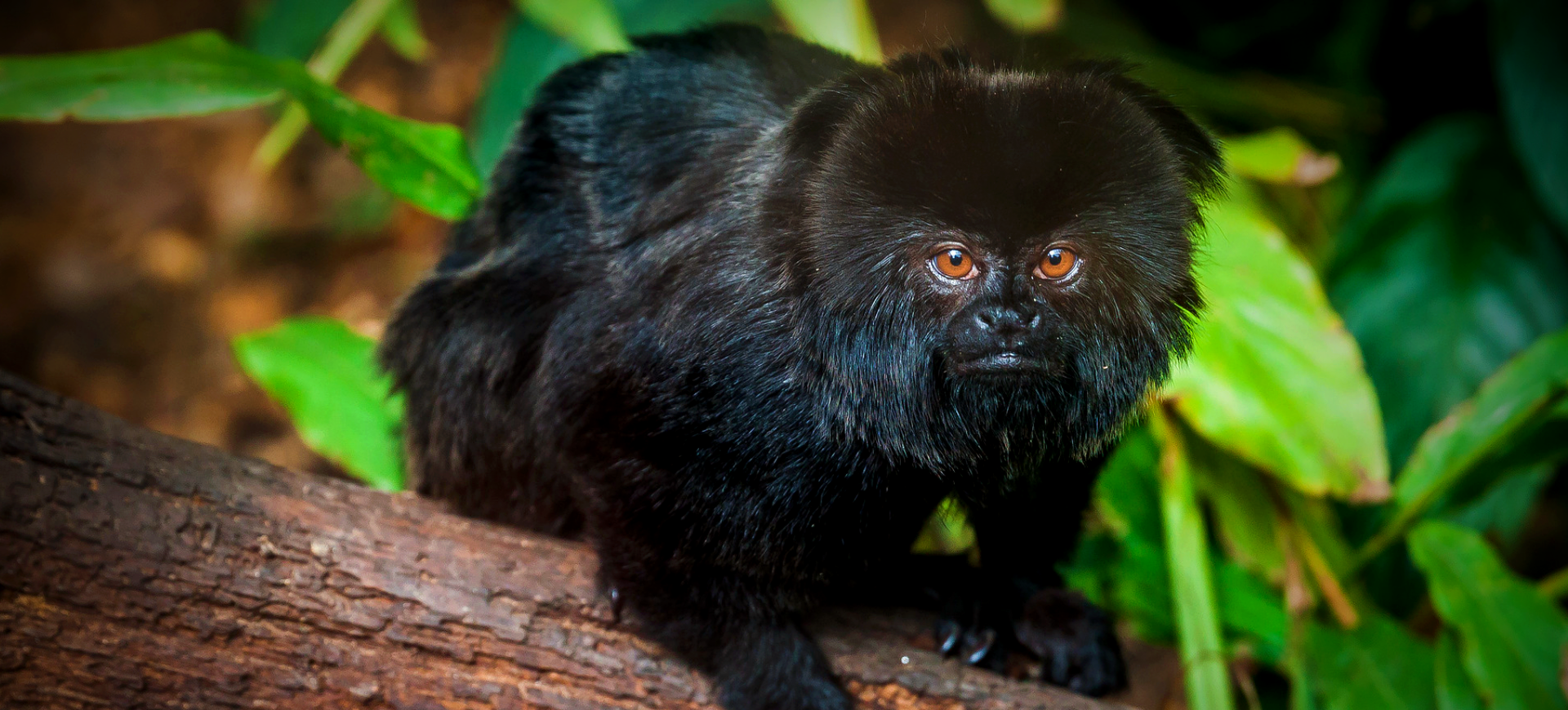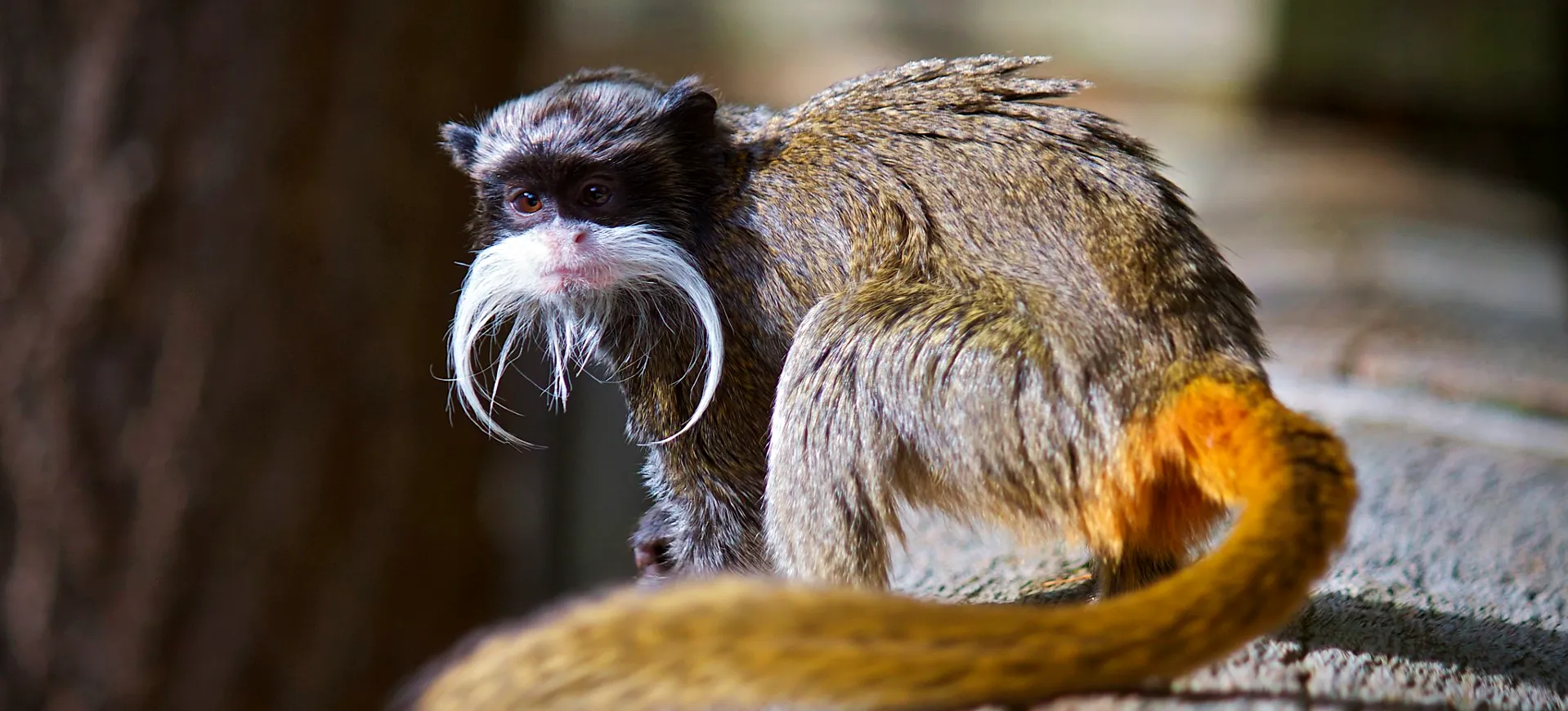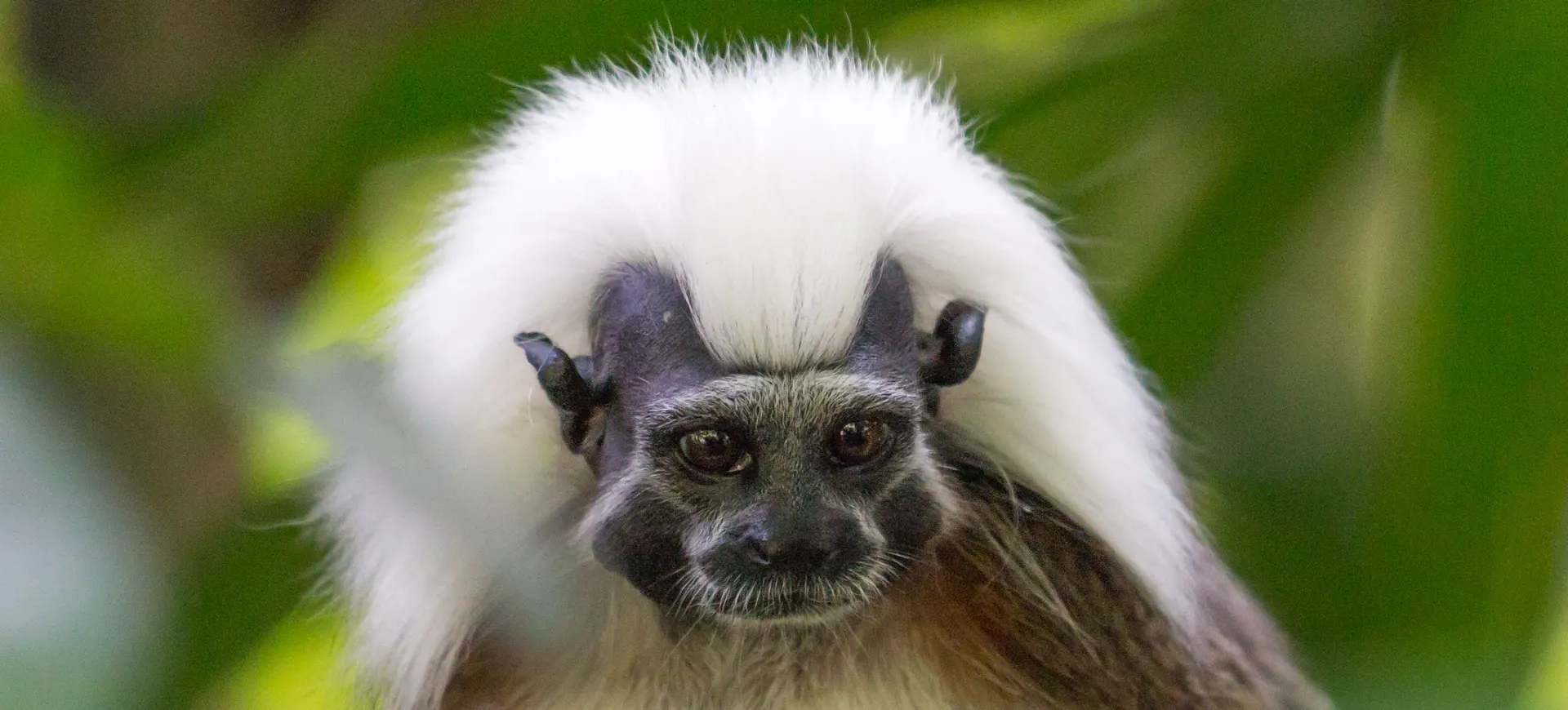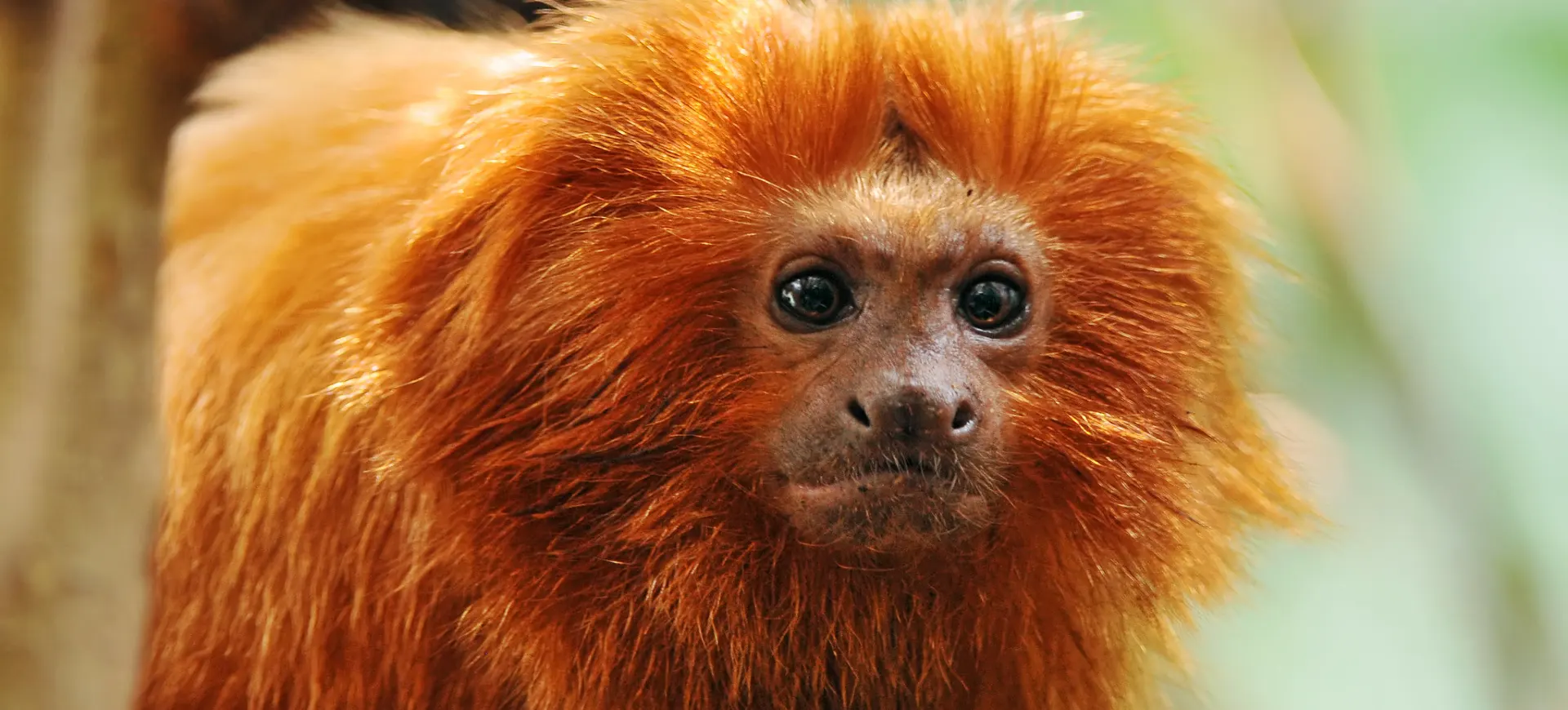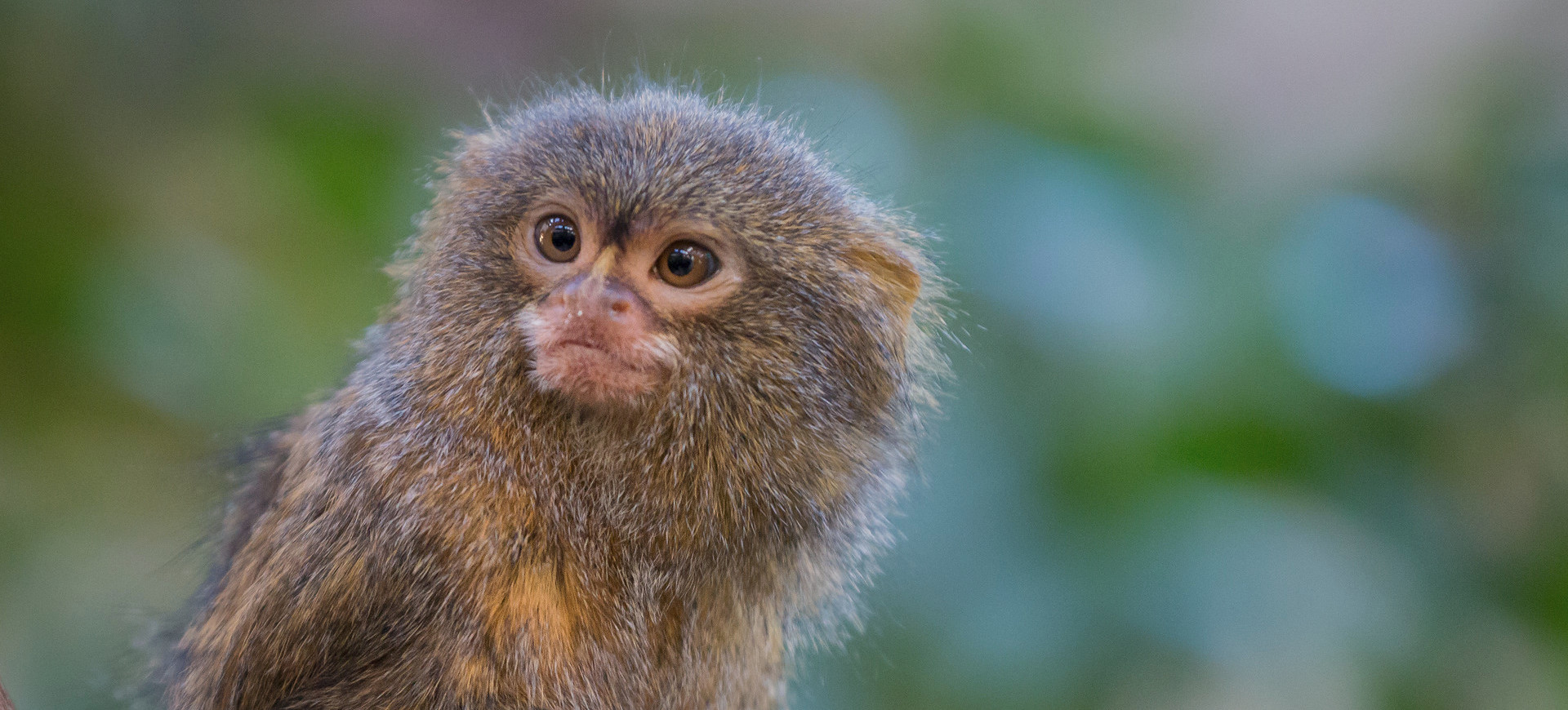Overview
The Golden-headed Lion Tamarin (Leontopithecus chrysomelas) is a small, endangered primate known for its stunning, mane-like golden hair surrounding its dark face, akin to a lion’s mane, hence the name. It boasts a vibrant, silky, long, and dark golden coat covering most of its body, with a stunning, lighter golden coloration encompassing its head, hands, and feet. It is part of the family of New World monkeys and one of the four lion tamarin species.
This tamarin species is known for its agile movements and exceptional climbing skills, being a proficient arboreal creature. The species exhibits prehensile hands and feet that are adept for gripping branches, an attribute that makes these primates adept climbers. Despite their diminutive size, these creatures are characterized by their vivacity and energetic behavior. They are often seen leaping through trees, moving swiftly and efficiently across their forested habitat.
Golden-headed Lion Tamarins are distinguished by their active social behavior. They are diurnal creatures, meaning they are active during the day and rest during the night. These primates live in close-knit family groups, often containing 2 to 8 individuals, led by a dominant breeding pair. They are known to be territorial, and they exhibit an array of vocalizations and visual signals to communicate with each other and protect their territory.
Taxonomy
Kingdom
Phylum
Class
Order
Family
Genus
Species
Type
Physical Description:
The Golden-headed Lion Tamarin is a small, agile creature with a bright golden mane surrounding its face and body. Its coat is dark golden, covering its body with a vibrant light golden color marking its head, hands, and feet. It has long, slender limbs and a tail that is usually longer than its body. The face is dark and hairless, highlighted by its encircling golden fur. Their hands and feet are specialized for arboreal life, with sharp claws (tegulae) instead of the flat nails found in many primates.
One of the most distinguishing features of the Golden-headed Lion Tamarin is its expressive face. These creatures have wide, curious eyes that are forward-facing, and they possess flattened noses with nostrils set far apart. The combination of their physical attributes gives them an arresting and striking appearance, with the golden fur contrasting vividly against their dark faces.

Lifespan: Wild: ~15 Years || Captivity: ~20 Years

Weight: Male: 1.3 lbs (0.6 kg) || Female: 1.3 lbs (0.6 kg)

Length: Male: 8.2 inches (20.8 cm) || Female: 8.2 inches (20.8 cm)

Height: Male: 9.8 in (25 cm) || Female: 9.5 in (24 cm)

Top Speed: 24 mph (39 km/h)
Characteristic:
Native Habitat:
The Golden-headed Lion Tamarin is endemic to the Atlantic coastal forests of the Brazilian state of Bahia. They are primarily arboreal, spending most of their time in the middle and upper canopy of the forest, typically from 3 to 10 meters above the ground. The forests in which these creatures reside are characterized by high tree species diversity, a dense canopy, and a relatively sparse understory.
This species is adapted to mature, undisturbed forests but can survive in secondary forests and shaded plantations. However, they rely heavily on old, large trees for their sleeping sites. The Golden-headed Lion Tamarin chooses tree holes or dense vine tangles for sleeping, which provide shelter and protection from predators and harsh weather.
Climate Zones:
Biomes:
WWF Biomes:
Biogeographical Realms:
Continents:
Countries:
Diet:
Diet & Feeding Habits:
The Golden-headed Lion Tamarin is an omnivore, feeding on various food sources. The diet of these small creatures is remarkably diverse, consisting of fruits, flowers, nectar, bird eggs, insects, and small vertebrates. The relative balance between these food sources varies seasonally and depends on availability.
These primates play a crucial ecological role as seed dispersers in their native habitats, contributing to the maintenance and regeneration of the forests in which they reside. They also use their long, slender fingers to probe into crevices in tree bark or epiphytic bromeliads, searching for insects and other small creatures. This feeding behavior aids in controlling the populations of certain insects, providing a balance within their ecosystem.
Mating Behavior:
Mating Description:
Golden-headed Lion Tamarins, like other tamarins, have a polyandrous mating system, meaning one female mates with multiple males within the group. However, only one dominant female per group reproduces. This social and reproductive structure is unique among primates, and it is thought to be a response to the high cost of twinning, which is common in this species.
During the breeding season, the dominant female mates with the resident males in her group. Males contribute significantly to parental care, carrying the offspring on their backs when they are one or two days old, only passing them to the mother for nursing. This high level of paternal care is one of the hallmarks of Tamarin’s social behavior.
Reproduction Season:
Birth Type:
Pregnancy Duration:
Female Name:
Male Name:
Baby Name:
Social Structure Description:
Golden-headed Lion Tamarins are highly social animals, living in small family groups of 2-8 individuals, typically comprising a mated pair and their offspring. Groups are territorial and use a combination of vocalizations and scent marking to define their boundaries. The dominant female in the group is the only one to reproduce, and all group members help rear the young. This cooperative breeding system is characteristic of tamarins and other primate groups.
These animals communicate with each other using a complex mix of vocal, visual, and chemical signals. They also engage in mutual grooming, strengthening the group’s social bonds. Such behaviors highlight the complex and cooperative nature of their social structure.
Groups:
Conservation Status:
Population Trend:
The population of the Golden-headed Lion Tamarin is facing a decline. One of the major factors influencing this decline is habitat loss due to deforestation for agricultural expansion, logging, and urban development. The forest fragments where these tamarins are found have been significantly reduced and isolated, affecting their ability to search for food and mates.
Furthermore, the genetic variability of these species is also threatened due to their restricted and fragmented populations. This can lead to inbreeding, further pushing the species towards extinction. Conservation initiatives are underway to mitigate these effects, including habitat restoration, reintroductions, and creating corridors to connect fragmented populations.
Population Threats:
The primary threat to the Golden-headed Lion Tamarin is habitat destruction due to agricultural expansion, logging, and urban development. This has led to the fragmentation of their habitat, which in turn increases their susceptibility to inbreeding and local extinctions.
Other threats include hunting and trapping for the illegal pet trade. Despite legal protection, enforcement is often lacking, and these animals are sometimes captured and sold as pets. Also, as their habitat becomes increasingly fragmented, they are at greater risk of predation and disease transmission, exacerbating their vulnerability.
Conservation Efforts:
Conservation efforts for the Golden-headed Lion Tamarin are centered around habitat preservation, restoration, and establishing wildlife corridors. Efforts are also being made to strengthen and enforce existing wildlife laws to mitigate hunting and illegal pet trade threats.
In addition, captive breeding and reintroduction programs have also been established in an attempt to bolster wild populations. Public awareness campaigns have been crucial in promoting the importance of these species and the need for their conservation. These combined efforts aim to ensure the survival and resilience of this captivating species.
Additional Resources:
Fun Facts
- Golden-headed Lion Tamarins are one of the few primate species that frequently give birth to twins.
- These primates have a call that can be heard up to half a kilometer away.
- Despite their name, they are not lions but are named for their lion-like manes.
- They have claw-like nails, unlike most primates, which assist them in gripping tree branches and finding food.
- Golden-headed Lion Tamarins spend most of their lives in trees and are rarely seen on the ground.
- They have a polyandrous mating system where one female mates with multiple males.
- Males share parenting responsibilities and can often be seen carrying and grooming the young.
- Golden-headed Lion Tamarins are an integral part of their ecosystem as they help in seed dispersal, thus aiding in the growth of their forest habitats.
- Their vibrant golden fur is a stark contrast to their habitat, making them easily noticeable.
- They have a highly expressive face and communicate using a complex mix of vocal, visual, and chemical signals.





